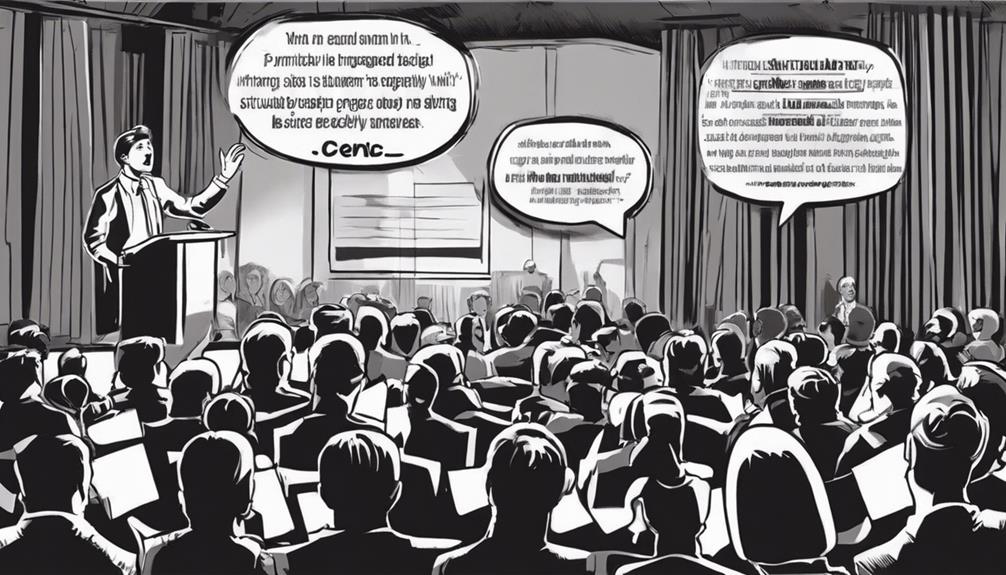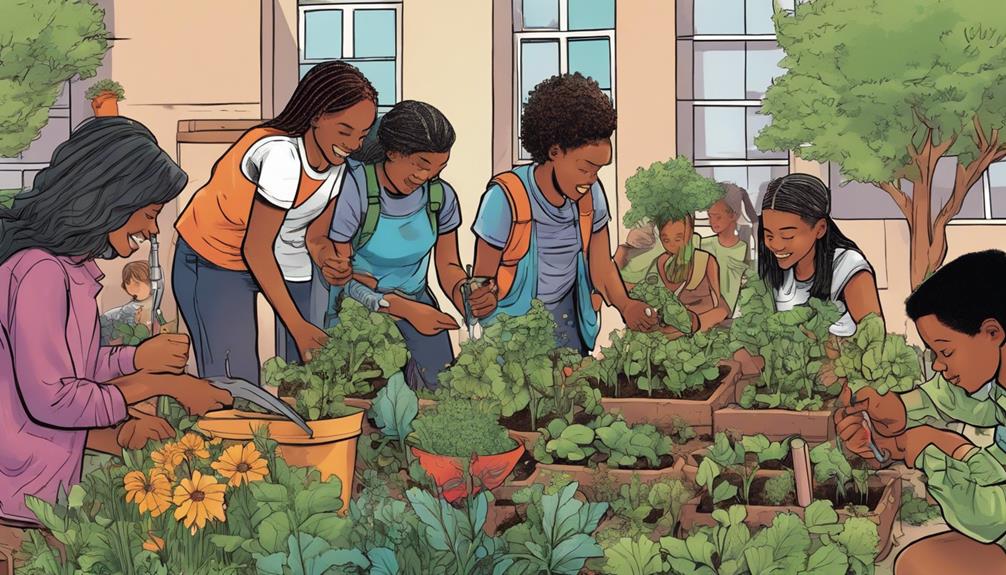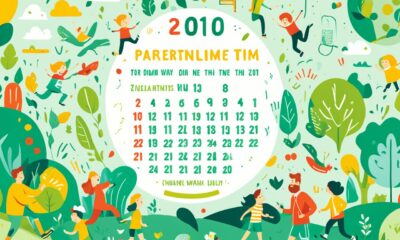Parenting Tips
Maintaining a Strong Parent-Child Bond Through the Years
Witness the evolving journey of maintaining a strong parent-child bond through every stage of growth—discover how to adapt and nurture lasting connections.

{“statusCode”:401,”message”:”License key missing”}
Key Takeaways
- Consistently respond to your child's needs to build trust and security.
- Encourage exploration and curiosity to foster cognitive development and strengthen your bond.
- Maintain open and respectful communication to validate feelings and opinions.
- Balance independence and guidance to support pre-adolescent growth and confidence.
- Stay empathetic and understanding during adolescence to bridge communication gaps and maintain connection.
Building Trust in Toddlerhood
During toddlerhood, your consistent and prompt responses to your child's needs are essential for building trust and security. This period is critical in child development, as it lays the groundwork for maintaining strong parent-child relationships.
By promptly addressing your toddler's needs, whether they're hungry, tired, or seeking comfort, you demonstrate reliability, which is important for fostering a positive parent-child bond.
When your child feels secure and trusts you, they're more likely to explore their environment confidently, knowing you're there to support them. This sense of security is crucial for their emotional development, helping them understand that they're loved and valued.
Your actions, such as soothing them when they're upset or celebrating their small achievements, reinforce this bond and show them that their feelings and needs matter.
Establishing this foundation of trust during toddlerhood not only benefits your child's immediate sense of security but also sets the stage for healthy interactions as they grow. It's about creating a nurturing environment where your child feels safe to express themselves, fostering a lifelong connection built on mutual trust and understanding.
This effort is an invaluable investment in their future well-being and your enduring relationship.
Encouraging Exploration in Early Childhood

Encouraging your child's exploration in early childhood lays the groundwork for their curiosity and cognitive development. As a parent, your involvement in this stage is essential for creating a strong parent-child bond. Provide a safe environment where your child feels free to explore, ask questions, and engage in imaginative play. This hands-on interaction not only boosts their cognitive abilities but also strengthens your relationship.
Open communication and active listening are key. When your child shares their discoveries or expresses their thoughts, listen attentively and respond thoughtfully. This practice supports their language skills and enhances their social interactions, fostering a sense of trust and understanding between you two.
Encourage activities that stimulate curiosity, such as nature walks, building blocks, or simple science experiments at home. Your participation and enthusiasm in these activities show your child that their interests matter, which further solidifies your bond.
Enhancing Communication in Middle Childhood

Establishing open and respectful communication in middle childhood is essential for strengthening the parent-child bond and fostering mutual respect. During this period, children begin to develop stronger autonomy and decision-making skills, making it vital to involve them in conversations and decisions. By acknowledging and valuing their opinions, you can enhance your relationship and build a foundation of trust and understanding.
Encouraging your child to express their thoughts is a key step in this process. Listen actively and show genuine interest in what they've to say. This not only helps them feel heard but also validates their feelings and experiences.
To enhance communication, try these strategies:
- Ask open-ended questions: Instead of yes/no questions, ask questions that require more elaborate answers, promoting deeper conversations.
- Model respectful communication: Demonstrate how to communicate respectfully by using polite language, maintaining eye contact, and listening attentively.
- Set aside dedicated time for conversations: Make it a habit to have regular, distraction-free discussions where your child feels comfortable sharing their thoughts.
Respecting Independence in Pre-Adolescence

As your child enters pre-adolescence, it's important to respect their growing need for independence while still providing necessary guidance. This period marks a significant shift where your child starts to seek autonomy and desires to be more involved in decision-making processes. By valuing their opinions and encouraging them to express their thoughts, you help cultivate mutual respect and trust. It's vital to strike a balance between granting independence and offering guidance, ensuring they feel supported but not stifled.
Creating a supportive space for communication is key. Listen actively to their concerns and preferences, showing that their voice matters. This approach not only boosts their confidence but also strengthens your relationship.
As they navigate social challenges, like peer pressure, discussing these topics openly can equip them with the tools they need to make responsible decisions. Encouraging them to think critically about their choices fosters a sense of responsibility.
Staying Connected During Adolescence

Getting through the teenage years can be difficult, but staying connected with your adolescent is essential for maintaining a strong parent-child bond. During adolescence, your child is seeking autonomy and exploring their identity, which can make communication challenging. However, fostering an open dialogue filled with empathy and understanding can bridge these gaps and keep the relationship strong.
To stay connected, consider these three strategies:
- Encourage Open Dialogue: Make it clear that they can talk to you about anything without fear of judgment. This openness helps them feel secure and supported.
- Balance Independence and Guidance: Allow them to make their own decisions while being there to offer advice when needed. This balance shows trust and respect for their growing autonomy.
- Be Consistent and Reliable: Despite their push for independence, teenagers need to know they can count on you. Being a consistent source of support fosters a sense of stability.
Adapting to Changing Needs

Recognizing that your child's needs evolve as they grow helps you adjust your parenting approach effectively. As time passes, your child will encounter various developmental stages, each with its own set of challenges and requirements. Understanding these shifts allows you to adapt your parenting style to better support your child, fostering a stronger, more resilient relationship.
Being flexible and responsive to your child's changing needs is essential. Open communication is key; encourage your child to express their feelings, thoughts, and concerns. By doing so, you not only gain insight into their world but also show them that their voice matters. This mutual understanding strengthens your bond and helps you provide the tailored support they need at different stages.
As your child grows, your guidance and support should evolve too. What worked when they were younger mightn't be effective now. Pay attention to their unique needs and be prepared to adjust your approach accordingly.
Quality Time Together

Spending quality time together plays an essential role in building a strong, lasting parent-child bond. When you dedicate time together without distractions, you communicate care and support, enhancing your child's sense of security and fostering positive relationships with parents. It's not about the quantity of time but the quality of attention you provide during interactions.
Consider these three activities to strengthen your bond:
- Create a Routine: Establish a daily or weekly routine where you spend uninterrupted time together, like family dinners or bedtime stories. This consistency helps your child express their thoughts and feelings openly.
- Engage in Shared Interests: Participate in activities that both you and your child enjoy, whether it's playing a sport, cooking, or crafting. These shared experiences cultivate a sense of togetherness and mutual respect.
- Explore New Adventures: Plan outings or vacations that allow you to discover new places and experiences together. These adventures can lead to cherished memories that reinforce your emotional connection.
Quality time activities provide opportunities for learning, growth, and positive reinforcement, creating a bond that lasts a lifetime. Cherish these moments, and you'll nurture a relationship built on love, trust, and mutual respect.
Open and Honest Communication

To maintain a strong parent-child bond, it's crucial to practice open and honest communication, starting with active listening techniques that show your child you're fully present and engaged.
Encourage them to express their emotions openly, ensuring they feel heard and understood, which fosters a supportive and trusting environment.
Active Listening Techniques
Active listening means giving your full attention to your child and truly understanding their message. It's not just about hearing words; it's about engaging with your child on a deeper level. To practice active listening effectively, make sure you maintain eye contact, nod occasionally, and use body language to show you're fully present. This fosters a positive parent-child relationship by making your child feel valued and understood.
Here are three key techniques to enhance your active listening skills:
- Reflective Listening: Summarize or paraphrase what your child has said to confirm you've understood correctly. Phrases like, 'So what you're saying is…' can be very helpful.
- Open-Ended Questions: Encourage your child to elaborate by asking questions that can't be answered with a simple 'yes' or 'no.' For example, 'How did that make you feel?' or 'What happened next?'
- Empathetic Responses: Show empathy by acknowledging your child's feelings and experiences. Saying things like, 'That sounds really tough,' or 'I can see why you'd feel that way,' helps in building trust.
Expressing Emotions Openly
Fostering open and honest communication with your child is essential for building a strong, trusting relationship. By expressing emotions openly and encouraging your child to do the same, you create a foundation of trust and understanding that's vital for maintaining strong parent-child relationships.
When you actively listen to your child's thoughts and feelings without judgment, you show them that their emotions are valid and important.
Encouraging your child to share their feelings helps promote a healthy emotional connection, making them feel valued and heard. It's important to create a supportive environment where both you and your child can express yourselves freely. This openness fosters a sense of safety and security, allowing your child to grow into a confident and emotionally intelligent individual.
Honest communication isn't just about talking; it's about truly connecting. When you express your own emotions openly, you model vulnerability and authenticity for your child, teaching them that it's okay to be open about their feelings. This practice strengthens your bond and helps in maintaining strong parent-child relationships over the years.
Mutual Appreciation and Trust

Building a strong parent-child bond starts with mutual appreciation and trust. As parents, it's essential to be responsive to your child's needs and create a consistent, safe environment. Trust flourishes when you actively listen, engage in open communication, and respect their opinions. These actions foster a sense of security and belonging, helping to build a relationship that withstands the test of time.
To cultivate mutual appreciation and trust, consider these steps:
- Encourage Open Dialogue: Make it a habit to have regular, honest conversations with your child. This builds trust and shows them that their thoughts and feelings matter.
- Respect Boundaries: Acknowledge your child's need for privacy and independence. Respecting their boundaries demonstrates that you trust them and value their autonomy.
- Value Perspectives: Show appreciation for your child's viewpoints, even when they differ from your own. This mutual respect fosters a deeper understanding and stronger bond.
Frequently Asked Questions
How Do I Keep a Strong Bond With My Child?
To keep a strong bond with your child, prioritize quality time together, free from digital distractions.
Engage in play to foster their development, and use this time to teach social skills and problem-solving.
Balancing work and family can be tough, so make dedicated moments count.
Resources from organizations like NAEYC and the U.S. Department of Education can offer you creative activity ideas that make these times special and impactful.
What Is a Strong Bond Between Parent and Child?
A strong bond between parent and child is marked by genuine warmth, love, and responsiveness. You create a nurturing space where your child feels secure and valued. This bond promotes trust, respect, and open communication.
What Is the Scripture for Dealing With a Difficult Child?
When dealing with a difficult child, scripture offers guidance. Proverbs 22:6 encourages you to 'train up a child in the way they should go,' promoting long-term positive behavior.
Ephesians 6:4 advises not to provoke your children to anger but to raise them with discipline and instruction in the Lord. Embrace patience, love, and understanding, and seek counsel from trusted spiritual leaders for additional support and wisdom.
What Does Low Demand Parenting Look Like?
Low demand parenting involves setting few expectations or rules for your child's behavior. It often entails avoiding enforcing consequences for misbehavior. This approach can lead to children struggling with self-discipline and responsibility. They might feel neglected or lack structure in their lives.
Kids raised in a low demand parenting style may also have difficulties with authority figures and following rules. As a result, it becomes crucial to balance warmth with clear boundaries and consistent guidance.
Conclusion
Maintaining a strong parent-child bond through the years requires intentional effort and unwavering love. Remember, your commitment today will shape tomorrow.
Embrace each stage with patience and understanding, from building trust in toddlerhood to staying connected during adolescence. Celebrate successes, navigate challenges, and always communicate openly and honestly.
By valuing quality time and mutual appreciation, you'll foster a relationship that withstands the test of time, growing stronger with each passing year. Your bond, built on trust, is your enduring legacy.
Parenting Tips
Unleash Your Public Speaking Potential With Confidence
Dive into mastering public speaking with confidence by learning essential techniques to captivate your audience and overcome stage fright.

Boost your public speaking skills by nailing the basics. Know your audience and design a clear speech layout. Tackle stage fright with deep breaths and expressive body language. Handle Q&A sessions calmly and confidently. Use visual aids to make your point stronger. These tips will unlock your public speaking potential and skyrocket your confidence.
Key Takeaways
- Practice speaking in front of a mirror multiple times for confidence.
- Utilize deep breathing and visualization techniques to overcome stage fright.
- Tailor your speech to connect with the audience on a personal level.
- Embrace non-verbal communication through eye contact and confident body language.
- Use clear speech structure with a compelling opening and strong conclusion.
Preparation for Public Speaking
Preparing meticulously for public speaking is essential for delivering a successful and impactful speech. Researching audience demographics, interests, and knowledge levels is vital. Understanding the importance of public speaking for communication skills, confidence, career growth, leadership, and effective idea conveyance is fundamental.
Practice speaking in front of a mirror and rehearse multiple times to build confidence. Creating a clear speech structure and tailoring content to connect on a personal level are key components. By focusing on these preparation steps, speakers can enhance their delivery and captivate their audience effectively.
Mastering Speech Structure

To excel in public speaking, mastering the structure of your speech is paramount for engaging and effectively conveying your message to the audience.
Begin with a compelling opening to grab attention, followed by a clear introduction of the main points. Organize these points logically, supporting them with relevant examples or stories. Guarantee a smooth shift between sections to maintain coherence.
End with a strong conclusion that reinforces your key message and leaves a lasting impact. Practice your speech multiple times to familiarize yourself with the content, tone, pace, and body language.
Embrace non-verbal communication through eye contact, confident posture, and effective gestures. Utilize visual aids sparingly to enhance, not overpower, your message.
Overcoming Stage Fright

Conquering stage fright is an essential aspect of delivering a successful public speech, requiring mastery of self-confidence and effective coping strategies. When facing stage fright, deep breathing exercises and visualization techniques can help calm nerves. It is important to focus on the message, engage the audience, and start with a strong opening. Enhancing presence through confident body language, eye contact, gestures, and voice modulation can also alleviate anxiety. Avoiding fidgeting, speaking clearly, varying pitch, and controlling the pace of speech are key strategies to overcome stage fright. Here is a table summarizing key points:
| Stage Fright Coping Strategies | Examples | Effectiveness |
|---|---|---|
| Deep breathing exercises | Diaphragmatic breathing | Calms nerves |
| Visualization techniques | Imagining a successful speech | Boosts confidence |
| Focus on the message | Engage with the audience | Reduces anxiety |
| Confident body language | Maintaining good posture | Enhances presence |
| Voice modulation | Varying pitch and pace | Controls nervousness |
Handling Q&A Sessions

When moving from delivering a speech to interacting with the audience in a Q&A session, it is important to maintain composure and actively listen to questions being posed.
During Q&A sessions, follow these key strategies:
- Listen Carefully: Pay close attention to each question to provide relevant responses.
- Remain Calm: Stay composed and confident, even if faced with challenging or unexpected queries.
- Engage with Gratitude: Thank the audience for their questions and show appreciation for their participation.
Visual Aids and Message Reinforcement

Utilizing visually appealing aids is pivotal in reinforcing the message delivered during a public speech. Visual aids, such as slides, props, or multimedia presentations, serve to enhance audience understanding and retention of key points.
When incorporating visual elements, it is essential to keep them simple, clear, and complementary to the spoken content. Overloading the audience with visuals can distract from the message, so it's essential to strike a balance that guarantees a memorable speech delivery.
Effective non-verbal cues, gestures, and body language can further reinforce the intended message, creating a cohesive and impactful presentation. Establishing a strong presence on stage through confident posture, eye contact, and appropriate hand movements enhances the overall delivery of the speech.
Frequently Asked Questions
How Can I Effectively Engage a Diverse Audience?
To effectively engage a diverse audience, tailor your content to resonate with their backgrounds and interests. Utilize engaging storytelling, interactive elements, and inclusive language. Encourage participation, listen actively, and adjust your delivery to guarantee everyone feels acknowledged and valued.
What Are Some Strategies to Handle Technical Difficulties During a Presentation?
In the field of public speaking, handling technical glitches demands a calm demeanor, quick thinking, and preparedness. Confirm backup plans for equipment failures, practice with the technology, and maintain composure to troubleshoot effectively.
How Do I Maintain Audience Interest Throughout a Longer Speech?
To maintain audience interest throughout a longer speech, engage them with compelling stories, interactive elements, and relevant examples. Vary your tone, pace, and delivery to keep them attentive. Use visuals sparingly to supplement key points and enhance message retention.
What Are Some Tips for Incorporating Humor Into a Serious Speech?
Incorporate humor strategically by using relevant anecdotes, witty remarks, or light-hearted observations to break tension, engage the audience, and make complex topics more digestible. Balance humor with professionalism to maintain credibility and impact.
How Can I Address Audience Skepticism or Resistance During a Presentation?
To address audience skepticism or resistance during a presentation, employ strategic storytelling, provide credible evidence, acknowledge opposing viewpoints respectfully, and engage in active listening. Build trust by establishing common ground and demonstrating empathy towards differing perspectives for a more receptive audience.
Conclusion
To sum up, mastering the art of public speaking requires careful preparation, confident delivery, and effective message reinforcement. By honing speech structure, overcoming stage fright, and utilizing visual aids strategically, individuals can unlock their full potential as speakers.
Embracing these practices will not only enhance communication skills but also leave a lasting impact on the audience. With dedication and practice, anyone can become a compelling and confident public speaker.
Parenting Tips
Youth Drive Eco-Friendly Revolution Against Plastics
Unleash the power of youth in the fight against plastic pollution by discovering their innovative eco-friendly initiatives and impactful contributions.

The youth are at the forefront of combating single-use plastics, advocating for sustainable alternatives to tackle the pressing issue of plastic pollution. With 14 million tons of plastic entering the oceans annually, urgent action is essential. Despite challenges like lack of awareness and cheap plastic production, promoting eco-friendly practices, such as using reusable items, and supporting local businesses with green initiatives can make a significant impact. Engaging students in environmental efforts not only instills responsibility but also empowers them to lead the eco-friendly revolution. By educating and involving the younger generation, a cleaner and healthier environment can be achieved.
Key Takeaways
- Educate students on plastic alternatives and eco-friendly practices.
- Empower students to advocate for policy changes promoting sustainable initiatives.
- Encourage students to lead by example in reducing plastic consumption.
- Implement green practices within educational settings to inspire eco-friendly habits.
- Foster a sense of responsibility in students to drive the eco-friendly revolution against plastics.
Impact of Single-Use Plastics
Annually, a staggering 14 million tons of plastic find their way into Earth's oceans, highlighting the detrimental impact of single-use plastics on the environment.
Despite campaigns like Keep Britain Tidy, the persistence of single-use plastics poses a significant threat to marine ecosystems. Organizations are actively working towards replacing these plastics with sustainable alternatives to mitigate the environmental damage caused.
The youth, in particular, are affected by the toxic repercussions of plastic pollution. As plastic waste continues to accumulate in oceans, urgent action is required to address this global issue.
It is essential to raise awareness about the consequences of single-use plastics and promote eco-friendly practices to combat this growing environmental challenge.
Challenges in Reducing Plastic Waste

Despite efforts to raise awareness and promote eco-friendly practices, reducing plastic waste globally presents numerous challenges that hinder progress towards a sustainable future. One major challenge is the lack of awareness on plastic waste and its environmental impact.
Disparity in reducing single-use plastics globally also poses a significant obstacle. The cheap production of plastics makes it challenging to phase them out in favor of more sustainable options.
Additionally, the need for widespread eco-friendly practices is essential but often not implemented on a large scale. Education on the effects of pollution caused by plastics is lacking, further complicating efforts to reduce plastic waste effectively. These challenges highlight the complex nature of addressing plastic waste on a global scale.
Promoting Sustainable Practices

One significant approach to addressing the challenges in reducing plastic waste is by promoting sustainable practices that prioritize eco-friendly alternatives and responsible waste management.
By advocating for the use of eco-friendly alternatives to single-use plastics, such as reusable bags and water bottles, individuals can greatly reduce their plastic consumption.
Supporting local businesses that implement eco-friendly initiatives and encouraging schools to adopt sustainable practices are also effective ways to promote a more environmentally conscious lifestyle.
Additionally, promoting important waste management, such as proper recycling and disposal of plastics, plays a vital role in minimizing the environmental impact of plastic waste.
Engaging Students in Environmental Initiatives

Involving students in environmental initiatives is crucial for cultivating a culture of sustainability and fostering a sense of responsibility towards the environment.
By educating students on plastic alternatives and empowering them to demand eco-friendly products, schools can play a significant role in shaping future environmental leaders.
Implementing green practices within educational settings, such as reducing printing waste and promoting sustainable alternatives, helps students understand the importance of environmental conservation.
Through these initiatives, students can learn the value of responsible waste management and contribute to minimizing their ecological footprint.
Leading Eco-Friendly Revolution

Educating and empowering students on eco-friendly practices is fundamental in leading the eco-friendly revolution towards sustainable living. By instilling a sense of responsibility and understanding the impact of their actions, students can become catalysts for change. Here is a table showcasing key strategies to lead the eco-friendly revolution:
| Strategies | Description |
|---|---|
| Implement Green Practices | Schools can adopt sustainable practices like recycling programs and reducing plastic waste. |
| Advocate for Policy Changes | Students can push for policy changes at school and community levels to promote eco-friendly practices. |
| Lead by Example | Embracing sustainable practices, using reusable items, and volunteering to make a positive impact. |
| Educate and Empower | Educating peers, sharing facts, and demanding eco-friendly products to create a culture of environmental responsibility. |
Frequently Asked Questions
How Can Youth Effectively Influence Companies to Prioritize Recyclability?
Youth can effectively influence companies to prioritize recyclability by engaging in advocacy efforts, leveraging social media platforms to raise awareness, collaborating with environmental organizations, and participating in sustainable initiatives to showcase the demand for eco-friendly practices.
What Innovative Ways Can Schools Implement to Reduce Printing Waste?
To reduce printing waste, schools can implement digital platforms for assignments, utilize double-sided printing, encourage electronic submissions, promote paperless communication, establish printing quotas for students, and educate on eco-friendly practices. These innovative methods foster sustainability and cost-efficiency.
Are There Specific Strategies to Empower Students to Demand Eco-Friendly Products?
To empower students to demand eco-friendly products, schools can educate on sustainable options, encourage activism for environmentally responsible choices, collaborate with local businesses promoting green initiatives, and integrate eco-friendly practices into the curriculum.
How Can Local Businesses Be Supported in Implementing Eco-Friendly Initiatives?
Local businesses can be supported in implementing eco-friendly initiatives by providing financial incentives, offering training on sustainable practices, connecting them with eco-conscious suppliers, and promoting their efforts through community partnerships. Collaboration is key for lasting impact.
What Are the Key Steps to Fostering a Culture of Environmental Responsibility in Schools?
Fostering a culture of environmental responsibility in schools involves educating students on eco-friendly practices, empowering them to demand sustainable solutions, implementing green initiatives, reducing waste, and advocating for policy changes at school and community levels.
Conclusion
To sum up, crucially, the youth-led eco-friendly revolution against plastics showcases the power of collective action in combating environmental threats. By promoting sustainable practices, engaging students in initiatives, and leading the charge for change, these young activists are driving a dynamic shift towards a cleaner, greener future.
Their dedication and determination to tackle the challenges posed by plastic waste serve as a shining example of environmental stewardship and responsibility. Let us all join in this essential mission to protect our planet for generations to come.
Parenting Tips
Unleashing Potential: Bruce Lee's Inspirational Lessons
Discover the transformative power of Bruce Lee's teachings and unlock your potential through philosophy, physical training, and strategic thinking.

Bruce Lee’s life lessons push for growth through **philosophy**, exercise, and smart thinking. Conquering challenges, using strengths in conflicts, and building a good work ethic by training the whole body are key. Staying calm and thinking strategically matter. There are efforts to keep his legacy alive with historic spots and filming sites. You can join in through online groups and social media. As a long-time teacher, the author shares cool ideas on growing personally and learning. Check out related info and chat with others for even more knowledge. **Bruce Lee’s lessons inspire.**
Key Takeaways
- Philosophy of hard work and continuous improvement for personal growth.
- Leveraging strength for conflict resolution and strategic responses.
- Training every part of the body for a strong work ethic.
- Preserving Bruce Lee's legacy through historic locations and landmarks.
- Engage with online community for educational insights and inspiration.
Influence on Personal Growth
Bruce Lee's philosophy of physical training and hard work propelled me to conquer personal challenges and embrace a mindset of continuous improvement. His belief in leveraging the enemy's strength to handle conflicts calmly resonated deeply within me.
The emphasis he placed on training every part of the body inspired a strong work ethic that I aim to embody daily. One of the key takeaways from Lee was the ability to remain composed in the face of provocation and respond strategically.
Witnessing how he lived out his teachings emphasized the importance of leading by example, a principle I now hold close to my heart. Bruce Lee's influence continues to shape my approach to personal growth and self-improvement.
Legacy Preservation Efforts

Efforts are underway to secure and preserve historic locations in Pak Chong related to Bruce Lee's legacy. The Big Boss house, an important filming spot, has remained largely unchanged since 1971.
Plans for the refurbishment of Wat Siri Samphan, the temple at the filming site, are in progress. Collaborative initiatives are working diligently to maintain iconic structures for future generations to appreciate.
These preservation endeavors aim to honor Bruce Lee's profound impact on martial arts and cinema. By safeguarding these filming sites and historical landmarks, the legacy of Bruce Lee can be protected and celebrated for years to come.
The commitment to preserving these significant locations showcases the enduring influence and importance of Bruce Lee's contributions to the world of entertainment and martial arts.
Community Engagement Opportunities

Engage with a network of like-minded individuals passionate about preserving historical landmarks by joining the Richard Rogers online community for daily updates on educational content.
Stay connected by following on Twitter and liking the Facebook page.
Engage with like-minded individuals interested in education and Bruce Lee's legacy.
Connect with a network of individuals passionate about preserving historical landmarks.
Opportunities to contribute to initiatives preserving Bruce Lee's impact are available.
Author Background and Expertise

My background includes being a high school science and mathematics teacher with a BSc (Hons) in Molecular Biology from Bangor University. I also hold a PGCE in Secondary Science Education and a Certificate in Mathematics.
Additionally, I'm an award-winning author of 'The Quick Guide to Classroom Management' and have experience in blogging on topics related to education, science, and mathematics teaching. With a strong foundation in both scientific knowledge and pedagogical skills, I aim to provide valuable insights and educational content to readers.
My expertise lies in creating engaging and informative material that resonates with individuals interested in personal growth, education, and the legacy of inspirational figures like Bruce Lee.
Related Content and Interaction

Exploring various articles by Richard James Rogers provides valuable insights on education, personal growth, and the legacy of inspirational figures like Bruce Lee. When investigating related content and interaction, readers can expect the following:
- Read more articles by Richard James Rogers covering education and personal growth topics.
- Gain deeper insights into Bruce Lee, Pak Chong, and 'The Big Boss' movie.
Engage with the author through comments, shares, and likes on blog posts.
- Stay updated on new publications and educational resources.
These interactive opportunities allow readers to explore further into the teachings of Bruce Lee and the impact he's had on personal growth and education.
Frequently Asked Questions
How Can I Incorporate Bruce Lee's Teachings Into My Daily Life?
I incorporate Bruce Lee's teachings into my daily life by applying his philosophy of hard work and using challenges as opportunities for growth. I remain calm, focus on training every aspect, and lead by example.
What Other Historic Landmarks Related to Bruce Lee Are Being Preserved?
Other historic landmarks related to Bruce Lee being preserved include the Big Boss house and Wat Siri Samphan in Pak Chong. Collaborative efforts are underway to maintain these iconic structures and secure his legacy for future generations.
What Types of Educational Content Can I Expect in the Online Community?
In the online community, expect a diverse range of educational content covering topics like personal growth, Bruce Lee's philosophy, historical preservation efforts, and community engagement opportunities. Stay informed, inspired, and connected with like-minded individuals.
Can Richard James Rogers Provide Personalized Teaching Advice?
Yes, I can provide personalized teaching advice. Drawing from my experience as a high school science and mathematics teacher, I offer tailored guidance to support educators in enhancing their classroom management and instructional strategies.
Are There Opportunities for Readers to Contribute Their Own Stories or Insights?
Yes, there are opportunities for readers to contribute their own stories or insights. I encourage sharing personal experiences and insights to foster a collaborative learning environment and enrich our community with diverse perspectives.
Conclusion
To sum up, Bruce Lee's timeless teachings on unlocking potential serve as a beacon of inspiration for individuals seeking personal growth and empowerment.
As the legendary martial artist once said, 'Be like water.' This adage encapsulates the essence of adaptability and resilience, urging us to flow and evolve with life's challenges.
Through embracing Bruce Lee's philosophy, we can tap into our inner strength, overcome obstacles, and aim for greatness in all aspects of life.
-

 Parenting Styles1 week ago
Parenting Styles1 week agoWorst Parenting Style: Impact on Child Development
-

 Parenting Styles1 week ago
Parenting Styles1 week ago2023 Indiana Parenting Time Guidelines Update
-

 Vetted7 days ago
Vetted7 days ago15 Best Books on Step Parenting Every Blended Family Needs to Read
-

 Parenting Tips6 days ago
Parenting Tips6 days agoUnequal Responsibilities: When One Parent Does All the Parenting
-

 Parenting Tips1 week ago
Parenting Tips1 week agoFostering Love: How Much Do You Get Paid for Foster Parenting?
-

 Vetted19 hours ago
Vetted19 hours ago15 Best Co-Parenting Books Every Parent Should Read for Successful Co-Parenting
-

 Vetted6 days ago
Vetted6 days ago15 Best Parenting Books of All Time Every Parent Should Read
-

 Vetted6 days ago
Vetted6 days ago15 Best Books for Gentle Parenting Every Parent Should Read

















